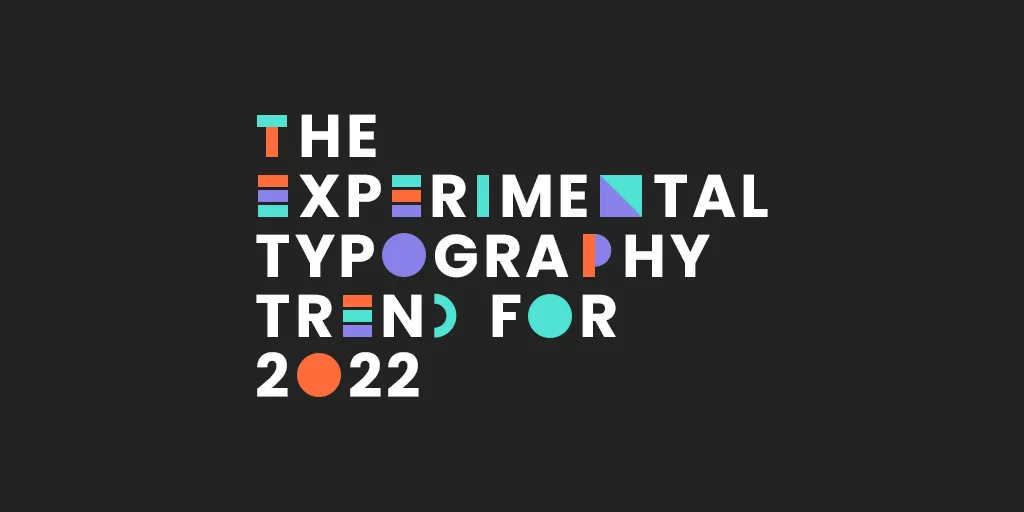Experimental typography is one of the biggest trends to land in 2023, even though it has been around for quite some time.
The choice of font is significant to your brand and experimental typography is pushing the boundaries of the norm.
Let’s explore this new trend and take a closer look at how and why it is used.
What is Experimental Typography?

Typeface refers to the design of lettering. Experimental typography refers to the more artistic approach to typeface design. In the early 20th century, Francis Picabia was a Dada pioneer of this practice and in the 1990s, David Carson became recognised for this due to his work in Ray Gun magazine.
The rejection of standard typeface practices caused turbulence in the design community, even though it is seen as an expression of emotion which is considered as art and design. Selection, layout and custom design form the pillars of experimental typography; creating your own styles specifically for your brand to accurately represent it.
Why Has Experimental Typography Become a Trend for 2023?
Designers are no longer held back by limitations and constraints. Although the alphabet, numeric system and symbols are all defined by conventions, this trend encourages out-the-box thinking and pushes the boundaries.
Typography is commonly structured within a grid so all elements can be placed in a uniform way. Whether it is centralised, grouped into headings or aligned to the right, type is usually laid out in this organised way. Experimental typography turns that on its head.
Rapidly advancing technology allows designers to get more experimental with typefaces and not stick to the norm. What makes this trend different is that it empowers designers to elevate their craft and apply the greatest care and attention to detail to each character.
Every letter, number and punctuation have a personality and it should embrace its quirks rather than be conformed to regularity. Whether it’s for aesthetic purposes, to catch your audience’s eye or elevate your brand identity, or for more specific promotional purposes, experimental typography is unique to you and your message no matter what.
Techniques & Examples of Experimental Typography
Experimental typography is all about making viewers think differently about the role of typography in design. There are many ways designers can achieve this, whether its playing around with spacing and kerning, character variation and contrasting. Here are some examples:
Mixing Different Typefaces Together
Not using just one typeface but multiple typefaces, regardless of similarity or polar opposites, is an example of experimental typography. Can’t choose one font? Choose many and break the boundaries!
Back in March, we saw the rebrand of Hermes which utilised this technique to the extreme. Now known as “Evri”, the courier rebranded using variable font intelligence with 615 unique characters creating 194,481 different logos.
Layering Typefaces Over Each Other
Adding different layers to your typography accumulates different levels to your brand and enhances creativity. Using stencil-like letters and placing them over other characters, applying different colours and patterns across a heading, or combining spots, stripes and hatching gives each layer distinction and depth.
Illustrated or Artistic Lettering
Taking your own handwriting and creating your own typeface is another example of experimental typography. Technology, such as a graphics tablets, enables designers to illustrate free-hand and digitalise it resulting in custom fonts and typefaces. It’s doesn’t have to be your own handwriting; it can be anything your imagination turns characters into and it will still be unique to you.
Is the Experimental Typography Trend Right for You?
If you’re looking to bring a dynamic flair to your rebrand, experimental typography might be the right direction to go in. Remember to stay true to your brand though and make sure it represents your message. Also, accessibility and legibility are other considerations to make when experimenting with typography.
Need some creative direction and inspiration? Take a look through our case studies or contact us today by calling 01473 934050, emailing hello@logicdesign.co.uk, or leaving us a message on our contact page.